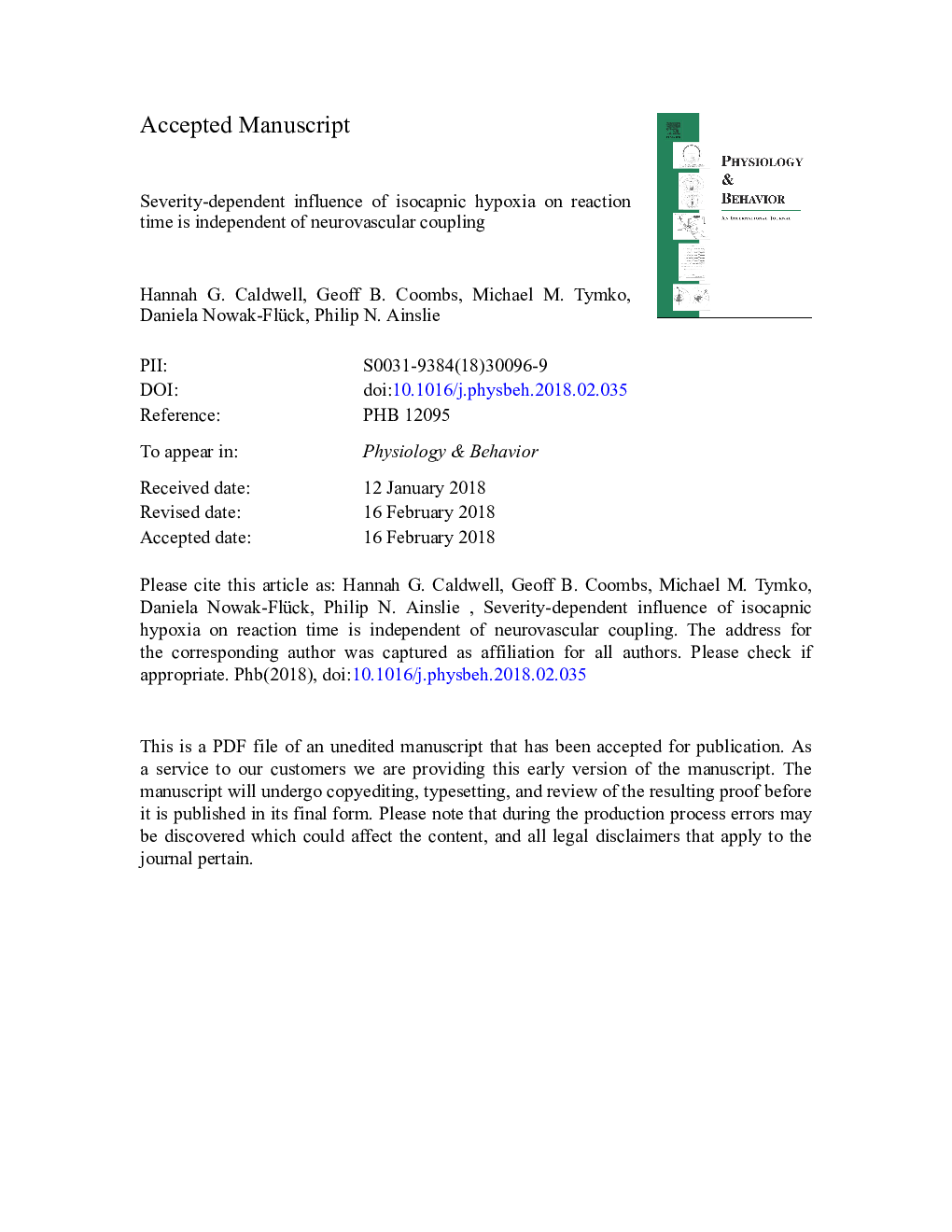| Article ID | Journal | Published Year | Pages | File Type |
|---|---|---|---|---|
| 8650599 | Physiology & Behavior | 2018 | 31 Pages |
Abstract
With exposure to acute normobaric hypoxia, global cerebral oxygen delivery is maintained via increases in cerebral blood flow (CBF); therefore, regional and localized changes in oxygen tension may explain neurocognitive impairment. Neurovascular coupling (NVC) is the close temporal and regional relationship of CBF to changes in neural activity and may aid in explaining the localized CBF response with cognitive activation. High-altitude related cognitive impairment is likely affected by hypocapnic cerebral vasoconstriction that may influence regional CBF regulation independent of hypoxia. We assessed neurocognition and NVC following 30â¯min of acute exposure to isocapnic hypoxia (decreased partial pressure of end-tidal oxygen; PETO2) during moderate hypoxia (MOD HX; 55â¯mmâ¯Hg PETO2), and severe hypoxia (SEV HX; 45â¯mmâ¯Hg PETO2) in 10 healthy individuals (25.5â¯Â±â¯3.3â¯yrs). Transcranial Doppler ultrasound was used to assess mean posterior and middle cerebral blood velocity (PCAv and MCAv, respectively) and neurocognitive performance was assessed via validated computerized tests. The main finding was that reaction time (i.e., kinesthetic and visual-motor ability via Stroop test) was selectively impaired in SEV HX (â4.6â¯Â±â¯5.2%, Pâ¯=â¯0.04), but not MOD HX, while complex cognitive performance (e.g., psychomotor speed, cognitive flexibility, processing speed, executive function, and motor speed) was unaffected with hypoxia (Pâ¯>â¯0.05). Additionally, severity of hypoxia had no effect on NVC (PCAv CON vs. SEV HX relative peak response 13.7â¯Â±â¯6.4% vs. 16.2â¯Â±â¯11.5%, Pâ¯=â¯0.71, respectively). In summary, severe isocapnic hypoxia impaired reaction time, but not complex cognitive performance or NVC. These findings have implications for recreational and military personnel who may experience acute hypoxia.
Related Topics
Life Sciences
Biochemistry, Genetics and Molecular Biology
Physiology
Authors
Hannah G. Caldwell, Geoff B. Coombs, Michael M. Tymko, Daniela Nowak-Flück, Philip N. Ainslie,
